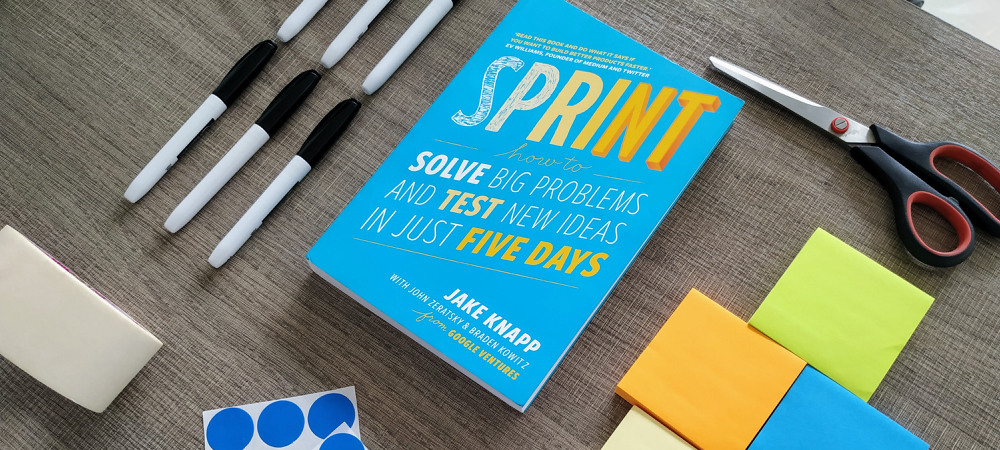My Design Process
UX Design is about identifying people's problems and wishes to create meaningful and relevant solutions. To identify the right problem it is important to have a good design process in mind. My ideal design process comes down to five basic steps - Research, define, ideate, prototype and test, based on the Design Thinking and the Design sprint method.

Kick-off
At the start of a new project there usually is a sort of kickoff meeting with the client to learn about their business, the industry, product, users, their pain points and what they want with the product they hired you to design. The time-frame is estimated, deadlines and scope are set and business goals are established.
Research
The next step to create a product or service is to learn about the people you are designing for. To do this, it is important to start with gaining empathy for who they are, what is important to them and to identify their needs, wants and objectives. Research methods to empathize with the user I like to use are observing the user, interviews, surveys and deskresearch.
Define
Based on the data gathered in the empathize phase, the next step is to take everything we know about the user and to identify their problems by combining all the data gathered and look for patterns in the data to glean insights of common pain points across the different users. To organize and to make the data more visual empathy maps, personas, storyboards or customer journeys can be used.
When the problems of the user are identified it is time to define a clear actionable problem statement success metrics. This gives me a clear goal to focus on and helps to generate tangible and actionable ideas to solve the problem.
Ideation
At this point we have a clear understanding of the problem we are going to solve. It could be beneficial to set up a design sprint with the rest of the team. Design sprints can help generate ideas fast and validate ideas quickly. this can be done by collective group brainstorming, competitor analysis for inspiration, sketching and running quick initial tests with potential users.
I start my brainstorming with pen, paper, sticky-notes or white board and try to come up with as many ideas as possible. Once I have worked through ideas and narrowed it down to a single idea, we can start with making a prototype.
Prototype
The ideas that we want to pursue on are worked out into a prototype. By creating a prototype the idea becomes more tangible and can be tested on real user. I start by making user flows maps. wireframes in Sketch or Figma. When finished I start prototyping. Depending on the complexity I choose a prototyping tool. Tools I mostly use are Invision, for low fidelity prototypes, and Axure, for high fidelity prototypes.
Test
Once we have a working prototype, we can conduct user testing to validate the idea or design. Does it solve the problems we were aiming to solve? How is the product being received? Can we improve on this? Does this solve our business goals? Did we discover areas of exploration for a future version?